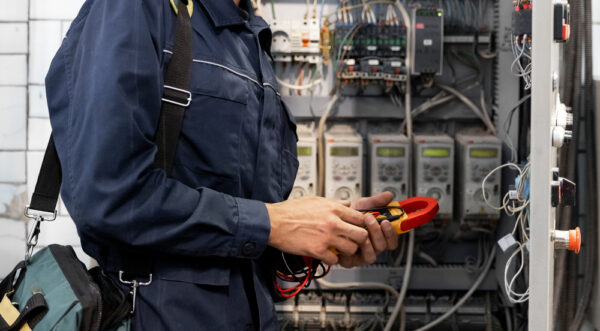6 Tips for Reducing Electrical Noise in Industrial Control Panels

Is electrical noise disrupting your automation systems? Interference might be invisible, but its effects are hard to ignore — unresponsive controls, erratic signals, and costly downtime. In industrial control panels, electrical noise does serious damage. It can harm components and lead to unpredictable failures.
The good news? With the right strategies, you can minimize interference and keep your systems running with precision:
- Use shielded cables and proper routing. Shielded cables with braided or foil shielding are generally a wise choice, helping to block external interference and keeping control signals clean — but proper cable routing is just as important. Power and signal wiring should never run parallel for long distances, since it increases the chance of signal bleed. Instead, separate them as much as possible and cross them at 90-degree angles when necessary to reduce interference.
- Improve grounding and bonding. A weak or inconsistent grounding system is one of the biggest contributors to electrical noise. Improve your grounding system by using a single-point ground, bonding panel components properly, and checking ground resistance regularly.
- Install line filters and ferrite beads. Electrical noise often enters control panels through power lines, but proper filtering can help. You could add line filters to block high-frequency interference, preventing it from reaching sensitive components. Ferrite beads — small, clip-on components — are a simple addition that can absorb and dissipate unwanted noise on both power and signal cables. The most important consideration here is placement — filters and ferrites should be installed as close as possible to the noise source or at the panel’s entry points.

- Use twisted-pair wiring for signal transmission. A simple but highly effective way to reduce electrical interference is to use twisted-pair wiring. Twisted together, two conductors create electromagnetic fields that cancel each other out, reducing noise and improving signal integrity. This technique works especially well for low-voltage control and communication signals. Differential signaling — where a signal is transmitted as both a positive and negative voltage — further enhances noise resistance.
- Keep components properly spaced. Packing too many electrical components into a confined space increases the risk of interference. High-power devices like relays, drives, and transformers should be positioned away from sensitive control circuits to minimize noise transfer. Also, consider heat — excessive heat buildup can degrade insulation and shielding, leading to higher noise levels over time. Proper spacing keeps components cool, in turn keeping interference to a minimum.
- Regularly inspect and maintain connections. Loose or aging connections are often overlooked sources of electrical noise. Over time, temperature fluctuations, vibrations, and general wear and tear can loosen terminal screws, increasing electrical resistance and making circuits more susceptible to noise. During routine inspections be sure to tighten terminal connections, replace worn connectors, and test for noise periodically.
Even the best noise reduction strategies can’t eliminate every problem. You need diagnostics and repairs only an expert can provide. GES specializes in helping facilities identify and resolve electrical noise issues quickly, keeping automation systems on track. We’re the team to trust to fine-tune your control panels for long-term reliability. And, now through the end of February, we’re offering 10% OFF single repairs or 15% OFF 3+ repairs of Allen-Bradley electrical products!
